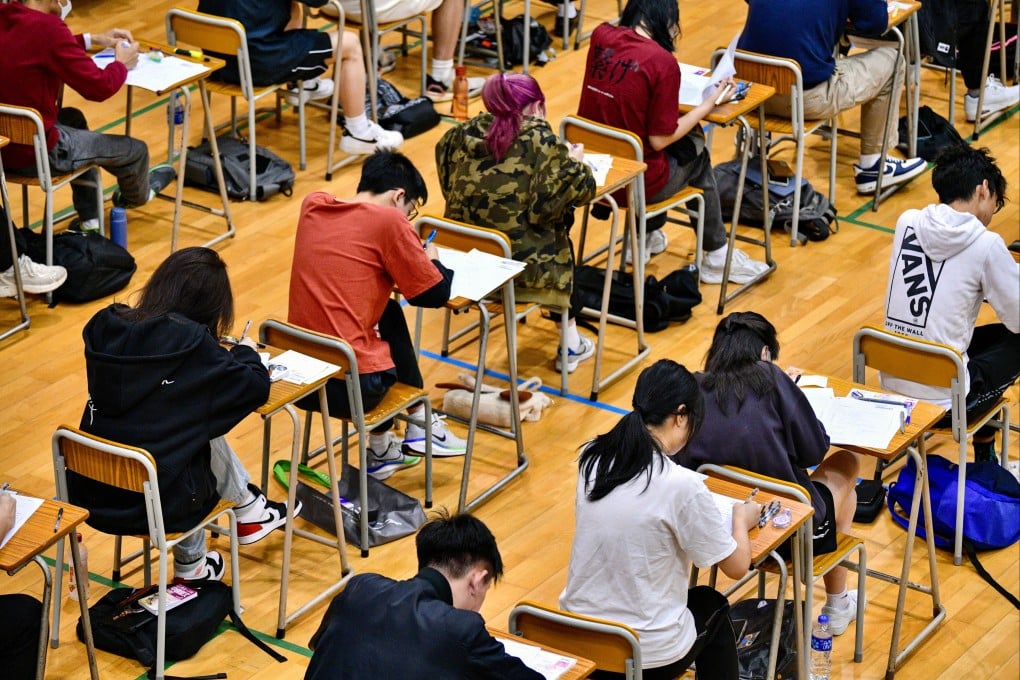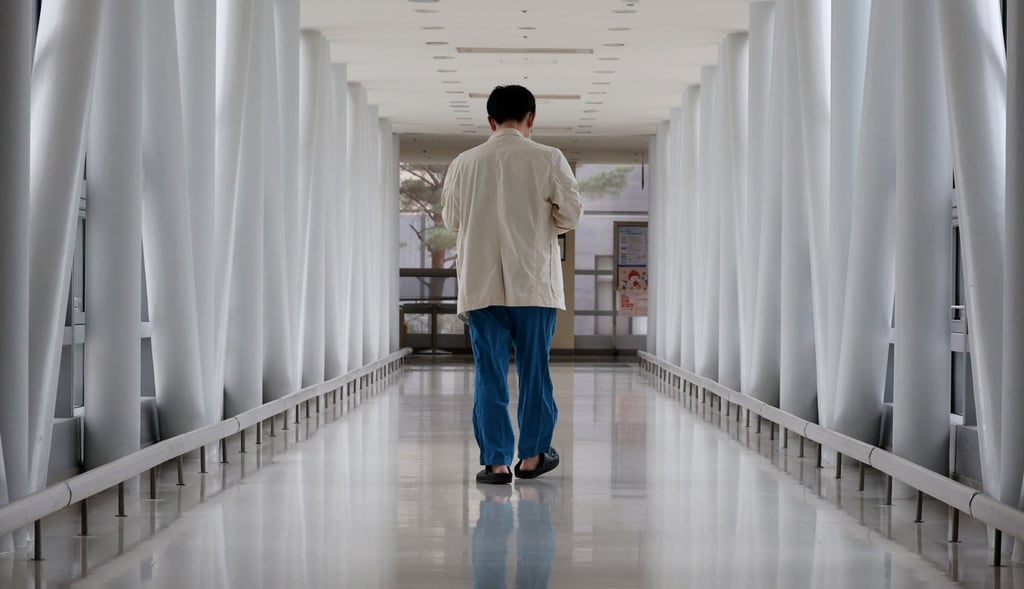More effort needed to encourage senior Hong Kong pupils to study Chinese history, education centre head says
教育中心负责人表示,需要更多努力鼓励香港高年级学生学习中国历史
- Having just 13 per cent of pupils taking DSE exam in subject is ‘far from ideal’, says Ho Hon-kuen of the Centre of National History Education (Hong Kong)
香港国家历史教育中心的何汉权表示,只有 13%的学生参加中国历史科目中学文凭考试“远非理想”
- In bid to boost interest in subject, pupils will from next academic year be given the choice of sitting one DSE paper rather than the current two
为了提升对该科目的兴趣,学生从下个学年起将可以选择只参加一张中学文凭试试卷,而不是目前的两张。
香港国家历史教育中心的何汉权表示,只有 13%的学生参加中国历史科目中学文凭考试“远非理想”
为了提升对该科目的兴趣,学生从下个学年起将可以选择只参加一张中学文凭试试卷,而不是目前的两张。

香港学校应加大力度鼓励高中生学习中国历史,因为只有 13%的学生在大学入学考试中选择该科目,“远非理想”,一位教育中心负责人表示。
Ho Hon-kuen, principal of the Centre of National History Education (Hong Kong), added on Sunday that all of society should cooperate to show students the importance of history. The subject helped people understand why societies succeeded or failed, he added.
香港国家历史教育中心主任何汉权周日补充说,全社会都应合作向学生展示历史的重要性。他补充说,这门学科帮助人们理解社会为何成功或失败。
数据显示,今年共有 5,852 名来自学校的中学文凭考试(DSE)考生参加了中国历史考试,占总人数的 13.5%,高于 2023 年的 12.7%或 5,493 人。
教育局于五月初宣布,学生在中国历史考试中可以回答较少的问题,以此来提升对该科目的兴趣。
The arrangement will begin with Form Five students in the next academic year.
该安排将从下一个学年开始,适用于中五学生。

何汉权表示,历史帮助人们理解社会为何成功或失败。照片:Edmond So
“Studying Chinese history provides inspiration by fostering a broad perspective and drawing lessons from the past … It helps us to gain insights into contemporary China,” Ho told a radio programme.
“学习中国历史通过培养广阔的视野和从过去汲取教训来提供启示……它帮助我们深入了解当代中国,”何在一个广播节目中说道。
“But 13 per cent is certainly far from being ideal. I think principals, teachers and the Education Bureau would like more [students to take the subject].”
“但 13%显然远未达到理想水平。我认为校长、教师和教育局都希望有更多学生选择这门科目。”
Ho, a former school principal, argued that whether the amendment would “optimise” Chinese history depended on how principals and teachers perceived the importance of the subject, as well as societal expectations about it, which was equally crucial.
何先生,前校长,认为修订是否能“优化”中国历史,取决于校长和教师如何看待这门科目的重要性,以及社会对它的期望,这同样至关重要。
Ho said the key to preventing students from stereotyping Chinese history as “boring but difficult to get good marks in” lay with principals, frontline teachers and the bureau, which is in charge of allocating resources.
何先生表示,防止学生将中国历史刻板印象为“无聊但难以取得好成绩”的关键在于校长、一线教师和负责资源分配的教育局。
“I think the three groups should not follow the old way, not act lazy and not turn a blind eye to problems existing,” Ho said, without giving examples.
“我认为这三方不应沿用旧方法,不应懒惰,也不应对存在的问题视而不见,”何先生说,但未举例说明。
Under the change, pupils will be given the choice of sitting one DSE paper instead of the current two.
根据这一变化,学生将可以选择只参加一张 DSE 试卷,而不是目前的两张。
Paper 1 accounts for 70 per cent of their grade, while Paper 2 takes up the remainder. If students take only the first one, their maximum grade will be 5 instead of the full 5**.
试卷一占他们成绩的 70%,而试卷二占剩余部分。如果学生只参加第一张试卷,他们的最高成绩将是 5,而不是满分 5**。
However, lawmaker Tang Fei, a former secondary school principal, said the low percentage of students taking Chinese history did not necessarily mean a lack of interest in the subject.
然而,前中学校长、立法会议员唐飞表示,选择学习中国历史的学生比例低,并不一定意味着对该科目缺乏兴趣。
“Most students start from practical considerations as this is about college entrance exams, and many university disciplines do not require Chinese history,” he said.
“大多数学生从实际考虑出发,因为这关系到大学入学考试,且许多大学专业并不要求学习中国历史,”他说。
Tang said he had observed that interest among students in Chinese history had been on the rise as more events and exchange programmes had been held in recent years.
唐表示,他观察到随着近年来举办的更多活动和交流项目,学生对中国历史的兴趣有所上升。
Tang said he expected “a little increase” might be seen in the percentage under the amendment but the real change would lie on whether there was change to the composition to the subjects required to take under the DSE.
唐表示,他预计在修订后相关比例可能会“略有增加”,但真正的变化在于是否会改变中学文凭考试(DSE)所需选修科目的组成。
Most local universities have a minimum requirement of studying four core subjects - Chinese language, English language, mathematics and citizenship and social development - with two to three electives.
大多数本地大学要求至少学习四门核心科目——中文、英文、数学和公民与社会发展——以及两到三门选修课。
“If more university majors ask for three elective subjects, I think more will take Chinese history, especially with that amendment,” Tang said.
“如果更多大学专业要求三门选修科目,我认为会有更多人选择中国历史,尤其是在那项修订之后,”唐说。
South Korean medical schools face expulsion amid ongoing strike over quotas
韩国医学院因配额争议持续罢工面临开除风险
The government proposed increasing the medical school admission quota to address a doctor shortage, but students argue poor working conditions are the real issue
政府提议增加医学院招生名额以解决医生短缺问题,但学生认为真正的问题是恶劣的工作环境

尽管政府提出冻结导致罢工的招生名额,韩国医学院仍敦促学生结束长达 13 个月的争议返回课堂,并威胁对罢工学生进行开除。
In a letter dated Tuesday, Kim Jeong-eun, dean of Seoul National University’s medical school, said striking students must return to school by submitting a re-enrolment form before March 27.
首尔国立大学医学院院长金正恩在周二的一封信中表示,罢工学生必须在 3 月 27 日前提交重新注册表格,返回学校。
“Failure to submit a [return-to-school form] could result in irreversible unregistered expulsion or dis-enrolment in accordance with school regulations,” he warned in the letter, as quoted by the Kyunghyang News.
“Severe disciplinary actions will be taken against those who disrupt classes and engage in bullying and harassment.”
On the same day, Korea University announced that it would extend the re-registration deadline for striking students from Thursday to March 21.
“After this deadline, further registration or re-enrolment applications will not be possible,” said Pyun Sung-bom, dean of Korea University’s medical school, The Korea Times reported.

Before the announcements from the two medical schools, Yonsei University had set a deadline of March 24 and encouraged its faculty members to persuade students to return.
The Ministry of Education also asked police to investigate the student councils at two institutions – Chungbuk National University and Seoul National University – that were suspected of coercing first-year medical students to join the strike.
On Friday, the South Korean government agreed to keep the medical school admission quota at 3,058 for 2026 if striking students returned to school by the end of March.
However, deputy prime minister and education chief Lee Ju-ho said authorities would proceed with increasing the quota to 5,058 if students failed to comply.
“Our government’s position that the medical school quota should be increased has not changed,” Lee said. “But restoring trust between the medical community and the government is also very important.”
The authorities’ position has failed to convince most students to stay in class, as student and trainee doctor groups see the government’s stance as more threatening than compromising.

In February 2024, the government proposed increasing the medical school admission quota by 2,000 students starting this year to tackle the doctor shortage.
Doctors argue that the real issue in the country’s healthcare system is poor working conditions rather than the number of practitioners.
The doctor-to-patient ratio in the country is 2.6 per 1,000 people, one of the lowest among developed nations, according to the Organisation for Economic Co-operation and Development.
In contrast, top-ranked Austria has 5.5 doctors per 1,000 people.
Additional reporting by Reuters
